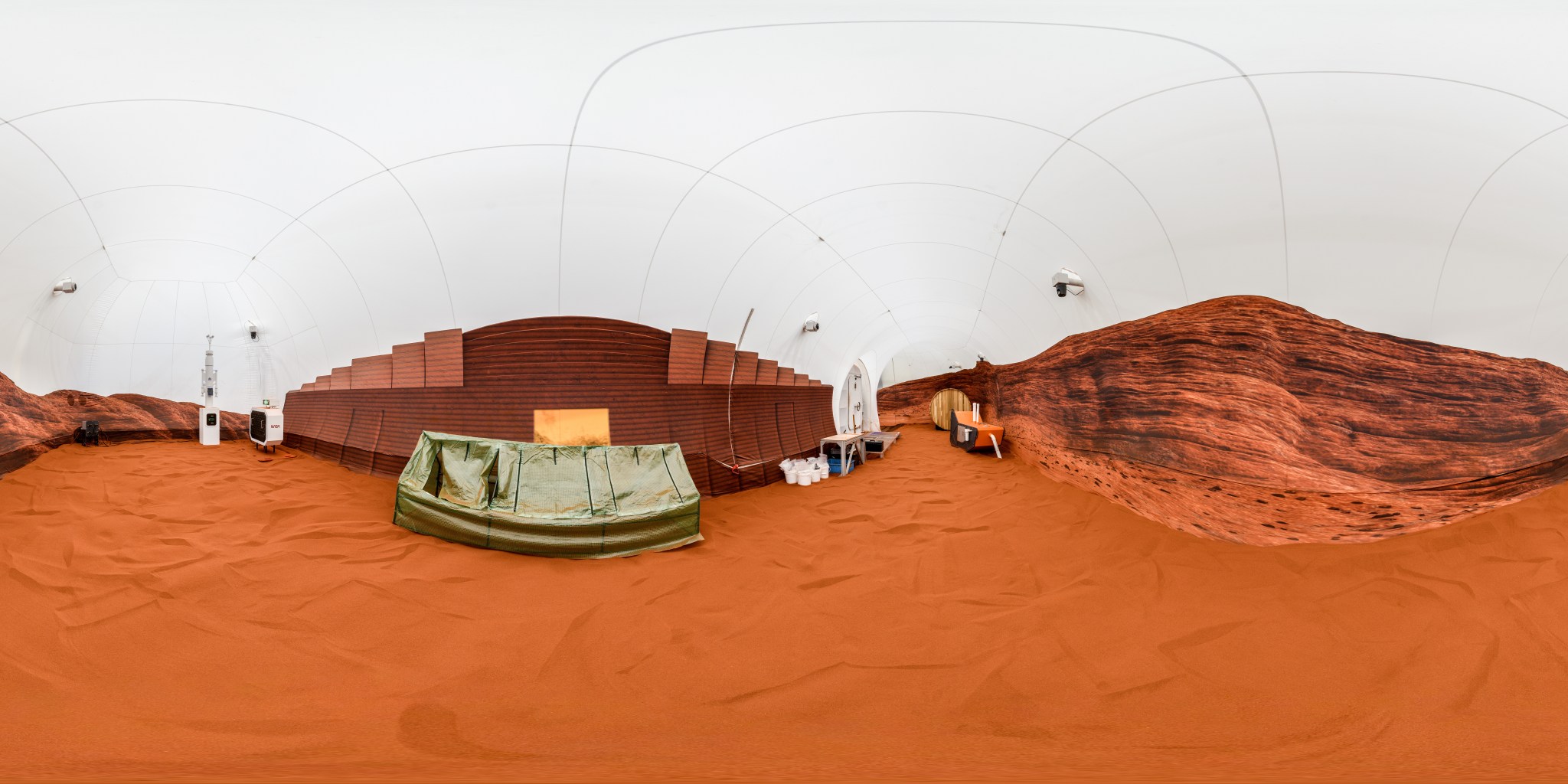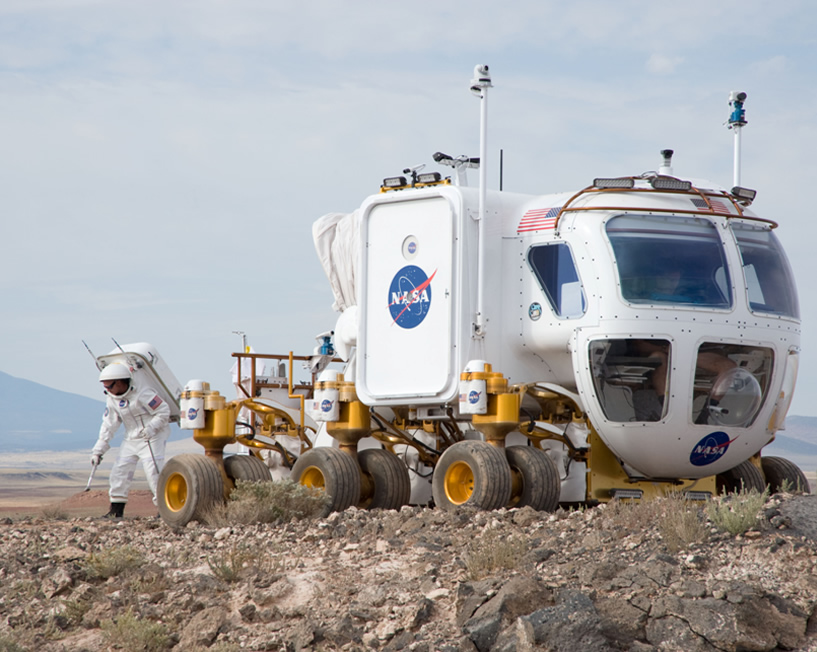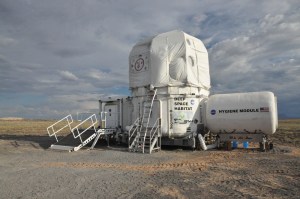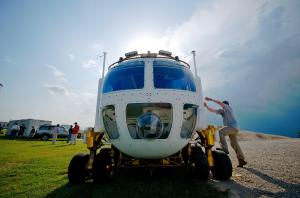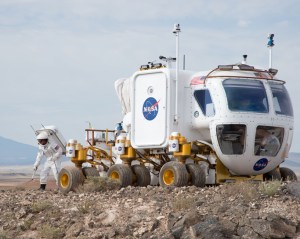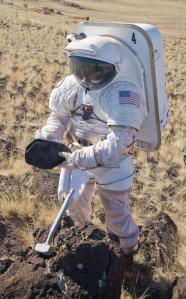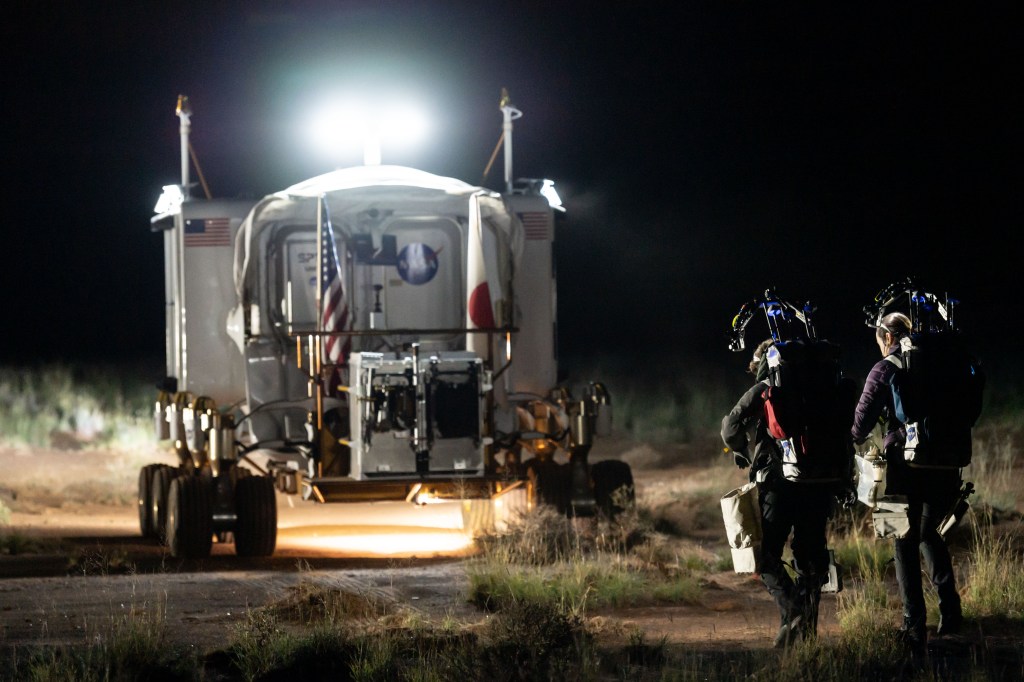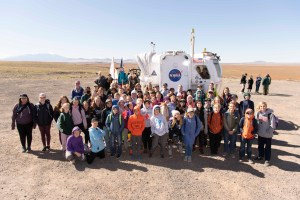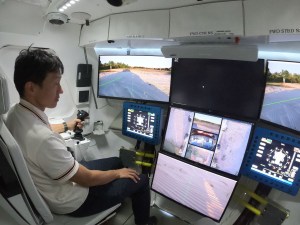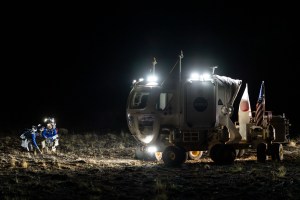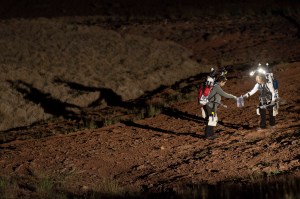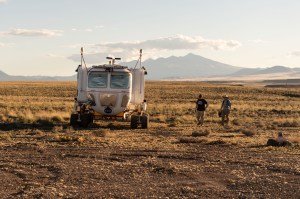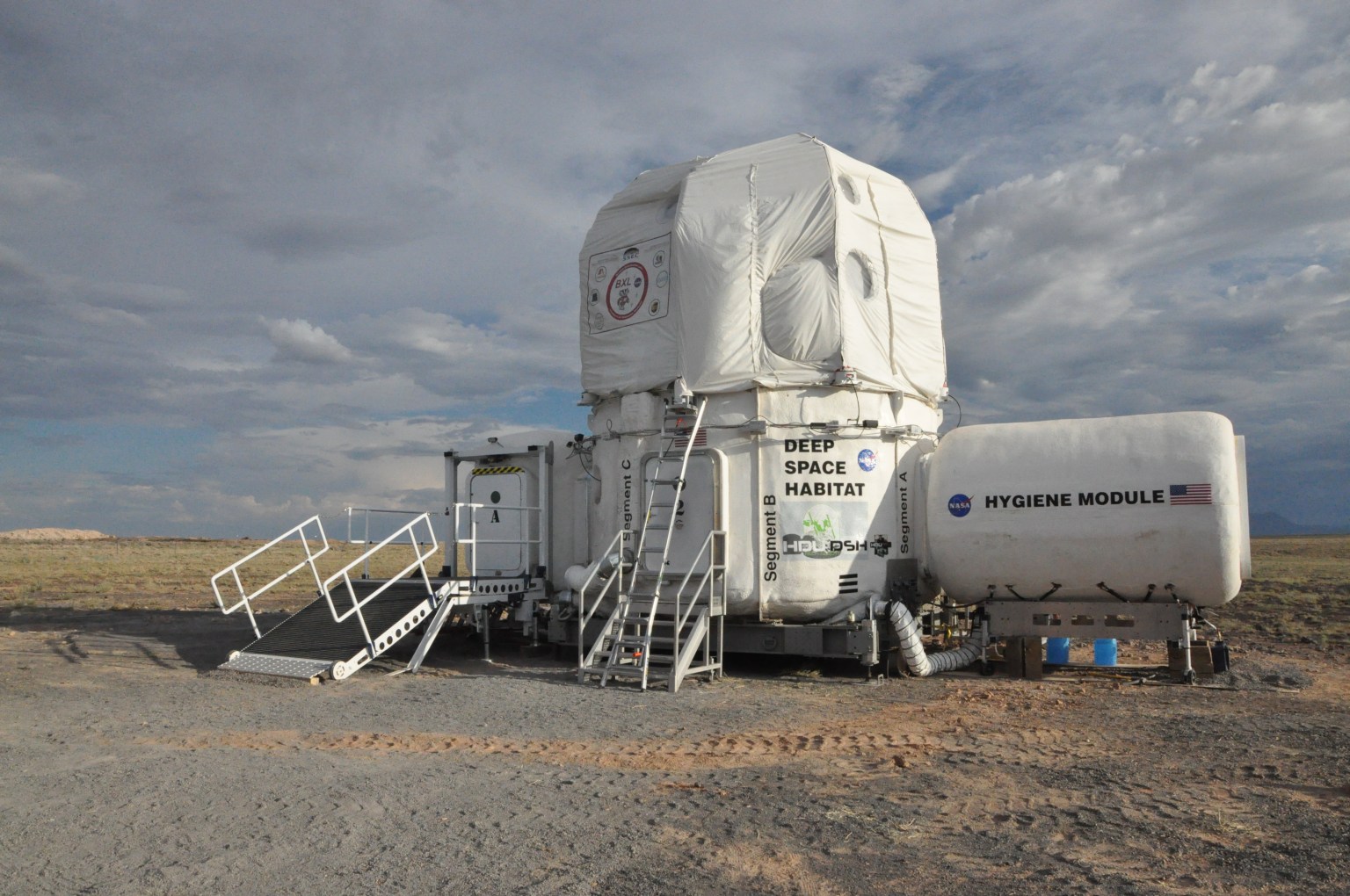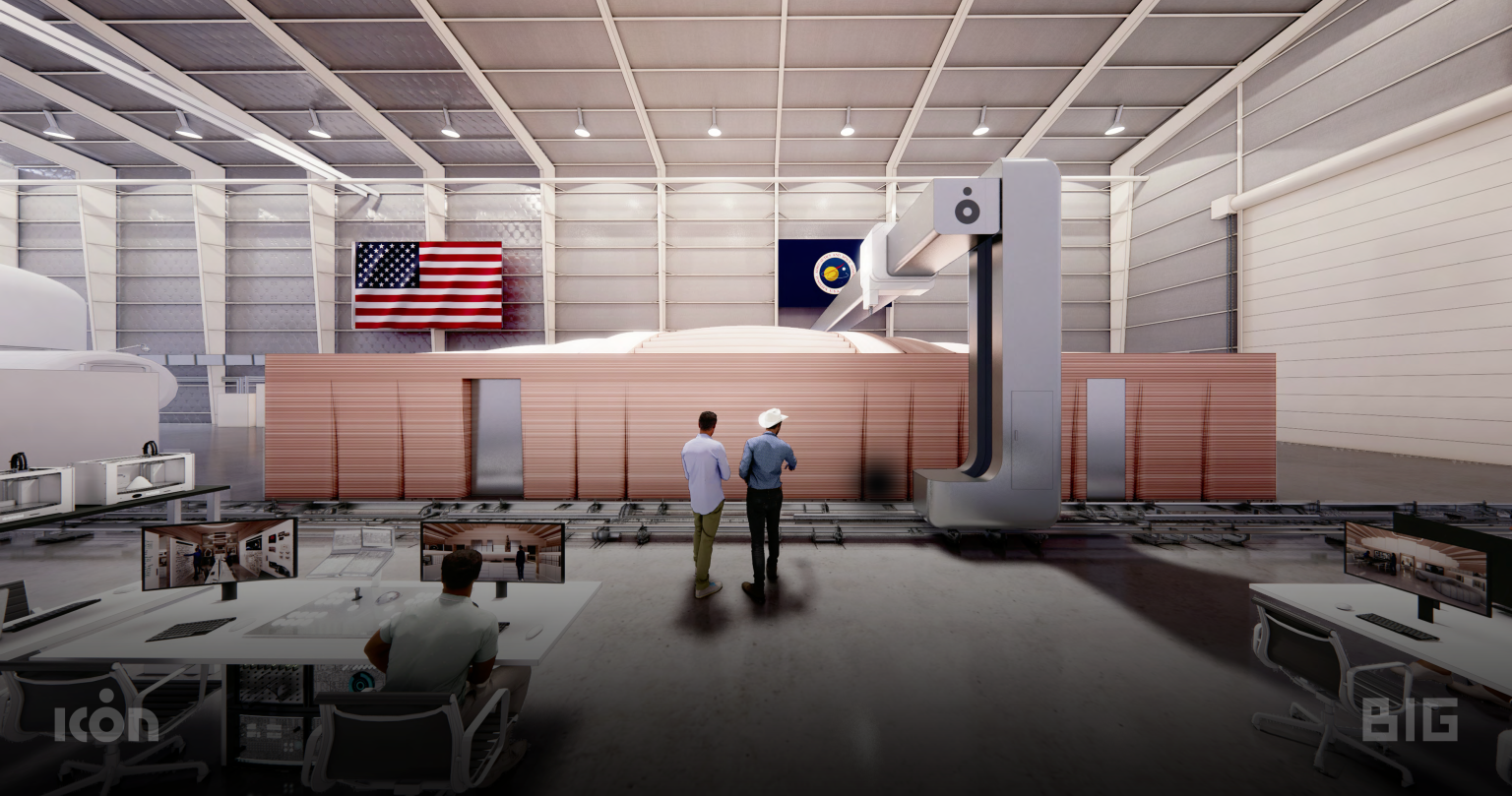Mission Overview
- Location: Arizona/mobile
- Environment: Desert
- Hazards Tested: Distance from Earth
- Research: Studies suitable for this analog include spacesuit equipment, robots, habitation modules, exploration vehicles, surface mapping, navigation techniques, and communication systems.
- Learn More: https://www.nasa.gov/exploration/analogs/desertrats
October 2022
D-RATS: Testing Pressurized Rovers
D-RATS will practice operations for future missions beyond Artemis III and will consist of three mission runs scheduled for Oct. 11-22 at Black Point Lava Flow, near S P Crater. The mission will primarily focus on conducting pressurized rover operations, which is a key element of future Artemis missions starting with Artemis VII in 2030.
Pressurized rovers are like recreational vehicles, commonly known as RVs, safely housing astronauts for weeks at a time, complete with all the air, water, food, hygiene equipment, and tools they need on their trek across the lunar surface. Astronauts can live and work comfortably inside the rover, exiting the vehicle to collect samples or deploy experiments.
Japan Aerospace Exploration Agency (JAXA) will join NASA for D-RATS as part of a study agreement that supports JAXA’s ability to potentially provide a pressurized rover for Artemis. JAXA astronauts and engineers will have an opportunity to experience living and working from within NASA’s prototype pressurized rover in an operational environment.
JAXA astronauts Akihiko Hoshide and Norishige Kanai, and JAXA expert Naofumi Ikeda will join NASA astronauts Jessica Meir and Stan Love and NASA engineer Sarah Shull, in driving a pressurized rover over the course of three days. Crews of two will rotate through living and operating out of the pressurized rover, including conducting simulated moonwalks.
Throughout D-RATS, NASA and JAXA will gather data about the pressurized rover’s design, cabin configuration, driving modes, timeline constraints, and mission operations to support potential design concepts for future pressurized rovers.
A team of NASA and JAXA flight controllers, astronauts, and scientists will lead the analog mission from the Mission Control Center. This team, together with crewmembers and field experts, will work together to record data for potential technology and operations development for a pressurized rover.
Through Artemis, NASA will land the first woman and the first person of color on the Moon, paving the way for a long-term, sustainable lunar presence and serving as a steppingstone for future astronaut missions to Mars. Analog missions help prepare humans for the challenges of deep space exploration and journeying farther into the cosmos.
Meet the Desert RATS Crew for Upcoming Artemis Rover Mission Simulations
As NASA works to develop technologies needed to establish a long-term presence at the Moon with future Artemis missions, pressurized…
Read the Story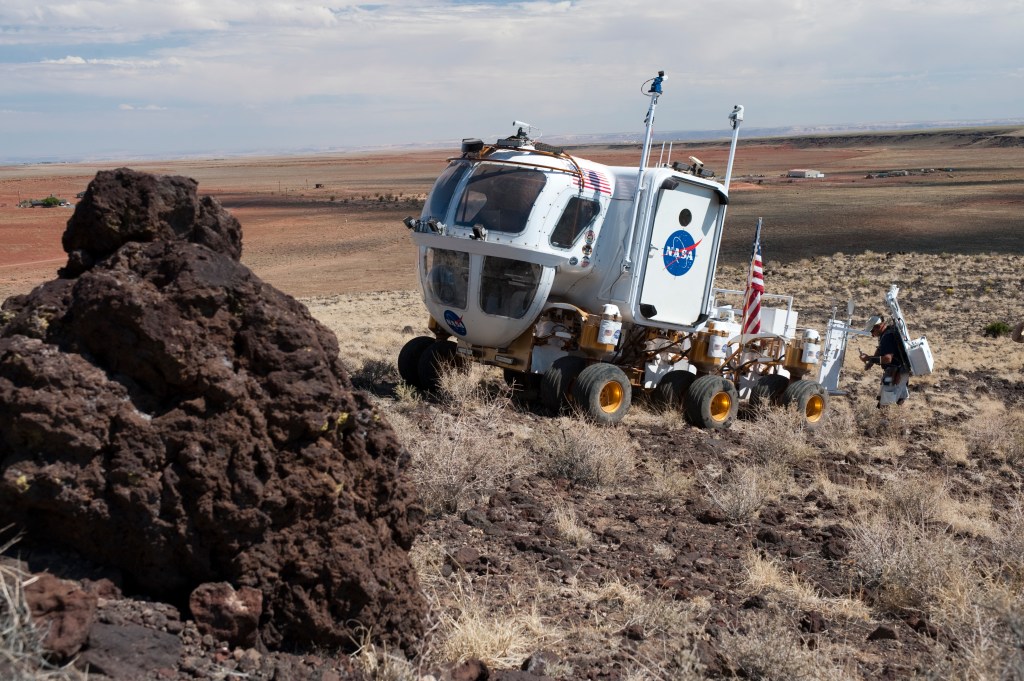
Desert RATS
What Are Analog Missions?
Analog missions prepare us for near-term and future exploration to asteroids, Mars, and the Moon. Analogs play a significant role in problem solving for spaceflight research.
Learn More about What Are Analog Missions?